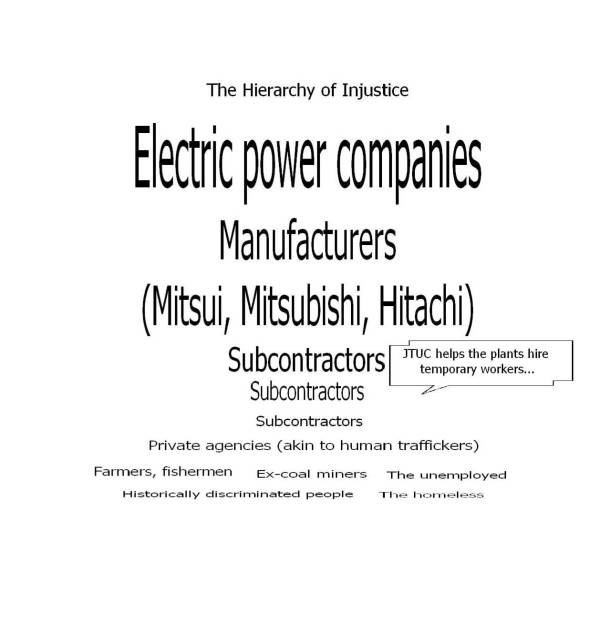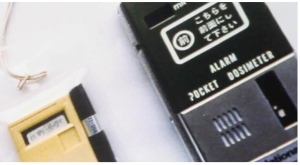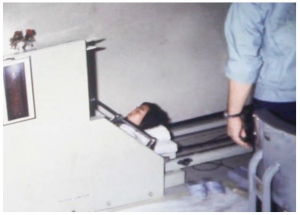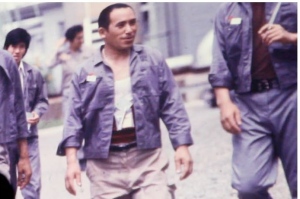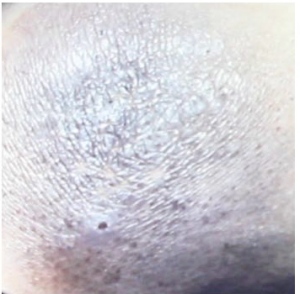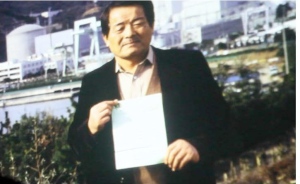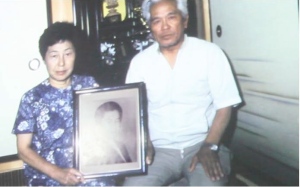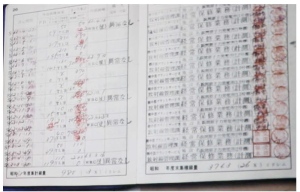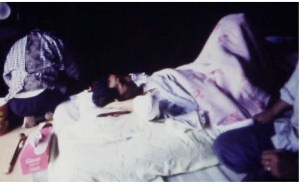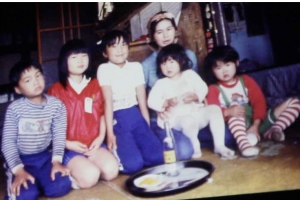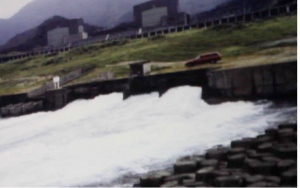Many, many thanks to Yasuo Akai for the following translation of Kenji Higuchi’s lecture!
Kenji Higuchi, The Truth of the Fukushima 50
This lecture was given on May 3, 2011, at the All Freeter’s Union[1], in Tokyo
Hello everyone. Let’s stop all the nuclear power plants. Now we have the momentum to do this. If we fail, Japan will be over. I mean it — this country will be finished.
The nuclear industry has been crushing workers for 40 years. We all must think of those 500,000 workers who have been exposed to radiation.
By the way, I disapprove of this crook, Naoto Kan. I say it again: he is a crook, who serves only this powerful nuclear industry, being at the mercy of it. We must not call him a politician, let alone a prime minister — I can not help but say this anyway.
I am a commercially unsuccessful photographer who has been shooting environmental destruction in Japan for 48 or so years and who now has ended up witnessing the Fukushima nuclear disaster. I thought this would inevitably occur. It was rather unfathomable for me that this kind of accident had not occurred at any of those more than 50 reactors for more than 40 years. I could not stress this more: this Fukushima accident — as well as the 1999 criticality accident at the Tokai Nuclear Fuel Plant
[2] — was inevitable, and also man-made. The industry’s irresponsibility caused those accidents. Japan’s nuclear power policy was introduced by what I would call an irresponsible regime from the beginning. We should rather take it for granted that such a regime should cause severe accidents.
First of all, let me rant about the current situation.
Before I go to the main topic, let me dwell on ranting about how this irresponsibility is unfolding at the Fukushima Daiichi Nuclear Power Plant. First, as I have said, this disaster is man-made.
Whenever I visit one of those nuclear facilities built in our earthquake-ridden Japan, I always ask the officials whether the plant is strong enough to withstand earthquakes. They always answer that Japanese civil engineering is the world’s best. Nevertheless, we all know that earthquakes cause tsunamis. And yet the media described the situation as unforeseen, and those academics – spin doctors – have the nerve to claim that the tsunami that hit the Fukushima facility was beyond their expectations.
It’s not as if lack of foresight – civil engineering unprepared for tsunamis – can protect us. We now have learned what kind of waves and earthquakes the Fukushima plant was designed to withstand: a 5.7 meters high tsunami – even a typhoon can easily generate waves at this level; an earthquake at 7.8 on the Japanese seismic scales – some say that it was actually 5. Therefore we cannot help but wonder what kind of civil engineering we actually have, and we must conclude that severe accidents will inevitably occur sooner or later.
By the way, I argue that the University of Tokyo must be once abolished, since many of those pundits are from this university — those academics won’t make Japan any better. Therefore this university must be scrapped, and then a second University of Tokyo that will make things better must be built from scratch.
Let’s see how the earthquake and tsunami crippled the Fukushima plant — first the earthquake shattered its pipelines, and then the tsunami broke in, making those emergency power generators inoperative. All of this was predictable.
This accident has prompted the Tokyo Electric Power Company (TEPCO) to finally deploy its own engineers — TEPCO simply calls them workers, but they are actually engineers — at the site, because only engineers are capable of dealing with the problem. Yet I suspect that TEPCO has sent its own 450 or 500 employees to the site just because it wants to pass itself off as doing its best to the mass media. In general, TEPCO, as well as those manufacturers such as Hitachi, Toshiba, and Mitsubishi, never sends its own employees to nuclear power plants, except for when accidents and scheduled check-ups take place — TEPCO’s employees are often there just to guide the press to the site. It is too naive to think that TEPCO is doing a great job simply because it deploys its own employees there. I see this as nothing more than an attempt at spin control.
The two most criminal spin doctors
Today I’m determined not to hide my rage against all those spin doctors and pundits, as well as all their bogus claims I have seen and heard since the earthquake. It is quite regrettable that Japanese people appear to forget how to get angry. And I believe that this is why we are unable to end the status quo, especially in politics. Have you ever seen someone really angry? Have you ever heard anyone’s wrath? Japan is on the verge of collapse because of radiation, yet people are too complacent. While not only the areas within 50 kilometers radius, but also those within 100 kilometers are seriously contaminated, people appear to be unconcerned. So, here I condemn two spin doctors appearing on the TV shows. Please don’t forget these names.
One is Yoshihisa Matsumoto, an associate professor at Tokyo Institute of Technology, who has been appearing on TV Asahi shows — there are many bad guys, but this one is the worst. It is incredible that TV Asahi still has him on the air. This talking head is clueless. Can you remember what he has said so far? Among the spewed radioactive materials, he has mentioned only iodine 131, which has a half-life of 8 days, but has never talked about cesium 137, which has a half-life of 30 years. I was stunned by him claiming that it would be all fine for a person to keep eating the contaminated spinach for 300 years. Besides, he keeps arguing that the contaminated milk is not a health threat. But, think about this: it may be safe if you keep eating only spinach, but you actually need various vegetables. Moreover, he never counts that radioactive materials would accumulate inside the body. He is a criminal scholar.
Now, onto the next person I condemn. He has been appearing on NHK shows. This news outlet is over — it no longer reports any important things. By the way, it’s not only the TV, but also the newspapers that are mute. The 5 major papers, such as the Asahi Simbun, Yomiuri Shimbun,Mainichi Shimbun, Sankei Shimbun, and Nikkei Shimbun, as well as the prominent new agencies such as Kyodo News, are tightly controlled. They simply pass along officials’ press releases, and then the academics repeat whatever the officials say verbatim.
NHK has this pundit, Keiichi Nakagawa, an associate professor specializing in radiation oncology at the University of Tokyo Hospital — he has written many books. Yikes, a doctor like him might kill many patients — I mean it. What has he said? He keeps arguing that there are no health threats whatsoever. The last time I saw him on the TV, he said that the current safe limits — 300 becquerel per kilogram for drinking water and raw milk, and 2000 becquerel per kilogram for vegetables — are too strict by the international standard and should have been doubled, so thatno one would be exposed to radiation. Is he a doctor at a prominent university in Japan? We must condemn those pundits, or Japan will not be a better place.
Prolonging the man-made disaster
Let me explain another reason why I call this accident man-made. As I have mentioned, the emergency power generators were broken when the earthquake hit. We were told that TEPCO at first did its best to fix them. This conduct however, was not actually helpful because all the pipelines either at the ground level or under ground were broken. Those shattered pipes created a mess there. Fixing the generators when the pipes were broken was a waste of time. Therefore I call this accident man-made also because TEPCO did not cope with the problem properly.
Was there something else TEPCO could have done other than to fix generators?– there was no other way than to keep watering. My wife once asked me why those reactors could have not been buried in concrete or water or whatever, and I answered her that she knew nothing: as long as the nuclear fuel generates heat, such procedures are impossible.
The officials say that those crippled reactors will be stabilized in 6 months — as this situation continues, we are likely to face a big problem. Do you know what that is? — the workers’ radiation exposure, which I have long investigated.
The annual radiation dose limits have been raised from 100 millisieverts to 250 milliseiverts since the accident occurred. I suspect that the state will eventually raise it to 500 millisieverts without hesitation, excusing that some other countries have such standard. If it becomes reality, all the workers will eventually die. I believe that a dosage of 250 millisieverts is enough to cause cancer. This is already murderous. TEPCO and the whole nuclear industry itself are in the killing business. I will discuss this at length later. This industry has destroyed tens of thousands of workers.
Tabloids are even better than major newspapers.
A part of the mass media now appears finally to be paying attention to this issue of workers’ radiation exposure because of the accident. I was stunned by those ladies’ tabloids, namely,
Josei Jishin (“
Women Themselves”),
Josei Seven (“
Women Seven”), and
Shukan Josei (“
Weekly Women”), coming over to me to have interviews with me, and I was convinced that this issue was getting media attention. See this
Washington Post. A great article is appearing in this. I didn’t expect that this would be this good when they interviewed me. I printed it out here on an A3 paper — it is a big article
[3]. It is quite encouraging for me to see that people are getting more serious about this problem. Those tabloids, some foreign papers, and local papers are doing great jobs to cover the workers’ plight, while the major Japanese newspapers remain clueless — those who work for the major papers may be offended, but I would rather recommend them, if they think that they are doing good, to come over to argue with me.
By the way, a person at The Asahi Shimbun Osaka headquarters once rang me to get my comment on the situation. I told him that the press must stop verbatim use of the official announcements. He admitted the fact that the major papers were told to pass along the authorities’ stories. The officials won’t tell the truth. Conveying official stories is not supposed to be the job of TV and newspaper reporters. Please keep in mind that there are always truths behind such stories. Journalists must seek out them — as I always do. I believe that you understand this.
Dubious “rotation blackout”
Still, there is more to complain about: the “rotation blackout” which was imposed immediately after the accident. Have you ever heard those celebrity critics of either engineering or the economy complaining about this?– no one. One tabloid called The Nikkan Gendai asked me to discuss something the major newspapers did not say, so I seized this opportunity: none of the major newspapers called the rotation blackout a conspiracy. I hope that some of you read my view appearing in The Nikkan Gendai, April 6. From the very beginning I knew that this was a conspiracy not only of the government and TEPCO, but also bureaucrats, economic giants, and even academics were involved. They were all criminals. Or, I could put it this way: this was a good opportunity for us to see what the nuclear industry was capable of. Why did they do that? While my district went blackout three times, other places, for example Minato Ward didn’t. Do you know why?– understandably, there were many government buildings there. But don’t be fooled — there was no need for the rotation blackout after all. You see that Kan is not trustworthy. He does nothing for people, but everything for money. I did not trust him from the beginning anyway.
You have to be as furious as I am. You have to express your anger when you feel this way. This should be quite a normal thing to do, yet people are mute, and that is why I raise a holler!
Let me explain why the rotation blackout was a conspiracy. When the 2007 Chuetsu Offshore Earthquake caused a fire at the Kashiwazaki Kariwa Nuclear Power Plant, it had to suspend its entire operations. It was in July — very hot. The Kashiwazaki Kariwa facility was the world’s biggest nuclear power station with 7 reactors, and it generated 820 million kilowatts. Did blackouts take place because of this suspension? On the other hand, at the Fukushima facility only 3 reactors were operational and generated only 250 million kilowatts before the Tohoku Earthquake hit. There were no reasons for the rotation blackout. Even a child can understand this.
The authorities wanted to defend the nuclear industry from the backlash. Those plutocrats, Mitsui, Mitsubishi, Hitachi, and Sumitomo, are part of this powerful industry — the plant manufacturers are Toshiba, Mitsubishi, and Hitachi. Those mega corporations, using the former foreign minister Seiji Maehara, had a state-backed project to export their plants to India, Indonesia, China, Vietnam, and Europe. What kind of guys are those corrupt politicians? They are busy serving those plutocrats, forgetting people. I cannot wait for all of them to be replaced. They did the rotation blackout in order to make us think that we need the nuclear power plants. Again, don’t be fooled by them.
Additionally, the local governments are too cooperative with the central government in terms of saving electricity. It does not have to be that way. Each of us can voluntarily save electricity by taking off some lights. We do so at my photography school. We should be clever. We actually have enough electricity. The problem is that we have been taught to spend it mindlessly. We should put off unnecessary lights, especially after 9:00 P.M.. We have to discuss this more publicly. We should change our way of living.
“Fukushima 50” are not heroes, but victims.
Before we go to the main topic, I have one more thing to talk about regarding the current situation, but this is related to the main topic — it is about the workers’ radiation exposure. It was outrageous to hear the news that three subcontractor workers entered the underground room of the turbine building at the Fukushima facility and were exposed to high doses of radiation because they wore ordinary shoes. When I entered a nuclear plant to shoot a scheduled check-up, every worker wore protective boots. At the current Fukushima facility, even the ABCs of protection are not provided. The dosage they were exposed was from 170 millisieverts to 180 millisieverts. I fear they were exposed to beta rays and will eventually die painfully. The National Institute of Radiological Science was not really helpful for those workers because this was controlled by the state. I strongly argue that doctors have to be independent from power. The workers stayed at this institute for 3 or so days and were then thrown out and told that there was nothing wrong with their health. I am concerned about their future — probably they will be not recognized as eligible for workers’ compensation.
By the way, just before I started this lecture, I was talking with a man — I think he has already left…oh, you are still here. Don’t you have to go now? … He is going to visit the Fukushima workers to show our support for them. The cruelest part for them however, still lies ahead. Please keep in mind that those workers’ tragedy has only begun. Now the annual dosage limits are 250 millisieverts. It is likely to be raised to 500 millisieverts. They will die — if they will, I will call their deaths pointless. While The Washington Post made a good article, The New York Timesbeautified the Fukushima workers’ sacrifice, describing them as heroes. I furiously oppose this view. The deaths are pointless, as well as unacceptable.
Now I finally go to the main topic. I will simply finish when time is up — you gave me only one hour. This is outrageous — how can I put what I have investigated for 40 years into one hour? So, don’t complain if I can’t finish my story.
Plutocrats rule the energy industry.
(Table 1)

You may think that nuclear power plants are difficult to grasp, but I argue that we should not be deluded by their complex appearance. They are to begin with part of the energy industry, so we should examine the Japanese energy industry as a whole. Moreover, we should focus on “industry” rather than on “energy.” We should not be naive to think that the problem is about energy. I shall show some tables that aim to put energy industry and the economy into perspective. Table 1 shows the history of the Japanese energy industry. Modernization of Japan started around the 1868 Meiji Restoration. Coal mining and steel making became the pillars of the state modernization policy, which aimed to catch up with the West, and then surpass it. Building a battleship was impossible without steel. Those corporations that owned coal mines made a killing from the state policy, and thus the plutocracies of Mitsui, Mitsubishi, Sumitomo, and so on, were established. This was the beginning of a Japanese tragedy. The tragedy did not begin with nuclear power plants.
Meanwhile, oil replaced coal. Then what was called a
kombinat in Japan — an industrial complex in which various factories and plants centered around an oil refinery and a port — was built everywhere across Japan during the 1960s. I shot all those polluted places, including well-known Yokkaichi City –I collected all those photos in a book
[4].
I argue that what wee see unfolding in Fukushima now is simply because we learned nothing from those earlier experiences. As Japan was making a killing, becoming wealthier and wealthier, it did so irresponsibly, ignoring what was the most important for us humans. We never thought of how to make people happier, nor that we should have cared about workers. That is why we find ourselves in these testing times — we are finally being awakened. As a cameraman who knows the history, I am able to clearly see things, such as who among those corrupt politicians is now busy working for money.
As the use of nuclear power was introduced, uranium became an energy resource. You know that uranium is non-renewable, and, burning, eventually becomes nuclear waste. To deal with this problem, a reprocessing plant has been built in Shimokita Peninsula, which is claimed to be able to recycle uranium eternally by blending uranium with plutonium, which has been extracted from the waste. The NO. 3 reactor — one of those crippled reactors at the Fukushima facility — uses this fuel, which is commonly referred to as MOX fuel, so plutonium is in it — this is very bad news. Plutonium has a 24,000-year half-life. How can we deal with it? Humans have never experienced this. What if it is now flowing in the atmosphere? Anyone who inhales tiny bit of this will die of cancer. You have to be serious about this. It could be found even in Tokyo, only 200 kilometers away from the facility.
So, now plutonium is treated as an energy resource. What will happen next? I wanted to write down here, “Japan sinks.” But, that was too sad, so I didn’t. I mean it though: Japan will sink. Now is the time to say that enough is enough.
The nuclear industry family tree
The nuclear power plants were imported, and that made things complicated. Do you know who did this? — Matsutaro Shoriki, the former owner of The Yomiuri Shimbun. He , as a bureaucrat during World War II and thus a Class A war criminal, tried hard to cling to his job, while many other war criminals were sacked. Establishing Japanese professional baseball was on of his efforts, and importing nuclear power plants was another. He successfully did all of this. With him, the former prime ministers such as Yasuhiro Nakasone and Kakuei Tanaka, as well as the head ofThe Yomiuri Shimbun Tsuneo Watanabe, promoted nuclear power plants. Now the Democratic Party is defending the nuclear policy, but to begin with, the Liberal Democratic Party — who had governed post-war Japan for 50 years — did all of this. Therefore I call all of them criminals.
(Table 2)
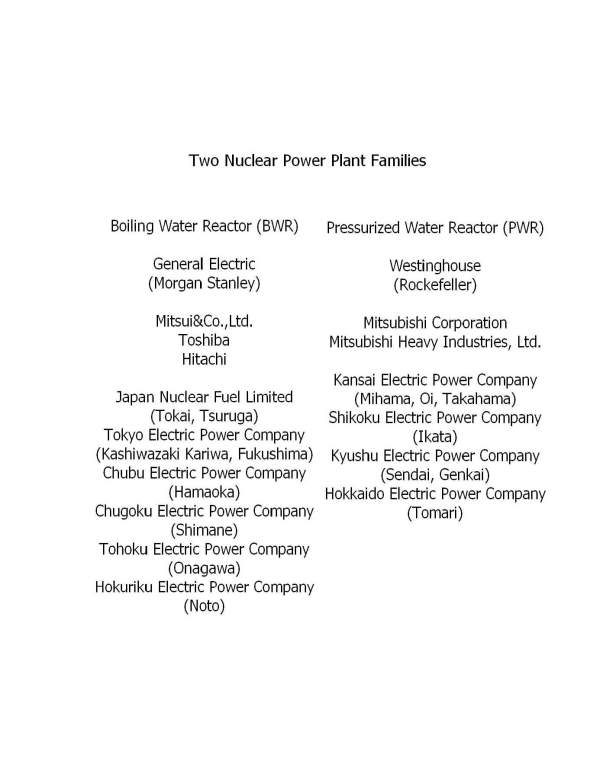
There are two American corporations, General Electric (GE) and Westinghouse. The former produces boiling water reactors (BWR) and the latter pressurized water reactors (PWR). With the former, Mitsui & Co., Ltd., Toshiba — which is the biggest among Mitsui Group — and Hitachi build BWRs….Don’t misunderstand. Hitachi belongs to Hitachi Group, but not to Mitsui Group. I put this here because it produces BWRs. On the other hand, with Westinghouse, which is funded by Rockefeller, Mitsubishi Corporation and Mitsubishi Heavy Industries, Ltd. make PWRs. By the way, GE is funded by Morgan Stanley. You must understand that the worst criminals are those plutocrats, but not the operators — electric power companies. You cannot stop nuclear power plants without stopping those plutocrats. Attacking only TEPCO will not help. You have to know this structure. Japan Nuclear Fuel Limited’s Tokai and Tsuruga, TEPCO’s Kashiwazaki Kariwa and — crippled — Fukushima…. having said that, TEPCO is criminal indeed…, the Chubu Electric Power Company’s Hamaoka, the Chugoku Electric Power Company’s Shimane, the Tohoku Electric Company’s Onagawa, and the Hokuriku Electric Power Company’s Noto are BWRs. The Knsai Electric Power Company’s Mihama, Oi, and Takahama, the Shikoku Electric Power Company’s Ikata, the Kyushu Electric Power Company’s Sendai and Genkai, and the Hokkaido Electric Power Company’s Tomari are PWRs. There are 54 reactors in Japan. Some students may think that we have only 15 or so reactors. No! 54 reactors are running amok across Japan. We must stop them. Help!
[5][6]
The hierarchy of injustice
(Table 3)
Please note that the repressive hierarchy of the industry as well as social discrimination has long made nuclear power plants possible. This is what I have long investigated for decades. I have been researching the nuclear plant workers for 38 years, believing that we must oppose this cruel structure.
At the top of the hierarchy there are those electric power companies, and then those manufacturers, such as Mitsui, Mitsubishi, and Hitachi. Those are establishments, hiring excellent students from the University of Tokyo — that is why I strongly argue that this university must be demolished. And then, there are those subcontractors, subcontractors of subcontractors, and so on, and those private agencies that recruit temporary workers. The mass media call those subcontractors and private agencies “cooperative companies.” That is a euphemism. Those private agencies are akin to human traffickers. Even calling them middlemen is charitable.
I always tell journalists this: this table is not a product of my imagination, but my investigation. The workers know this very well. The newspapers and TVs are liars. I will not forgive the media for their spin. The media must face this structure of discrimination. Cooperative companies? No kidding! Look at this hierarchy of exploitation. Look at those workers who are unable to form unions. Those companies have killed and buried workers in the dark for 40 years.
Naturally, Japanese mafia are involved with those private agencies. Let me describe a case you must not forget: the local mafia trafficked three high school students in Fukuchiyama City, Kyoto Prefecture in 1988. One was 16, the rest were 17. Japanese employment law forbids minors under the age of 18 from working in radiation areas. The traffickers fabricated those boy’s IDs for radiation exposure records. The boys worked at a nuclear power plant for two months, and were exposed to twice as high an amount of radiation than the other workers were usually exposed to. Moreover, the mafia took 1,000,000 yen away from the boys’ total pay of 3,000,000 yen. This crime was exposed by the police. I wanted to investigate this case further, but sadly the police did not disclose the information with the excuse that they had to protect the boys’ privacy.
There was another case — the horror would not stop here. In 2008, Toshiba’s subcontractor’s subcontractor, which was this kind of trafficker, again, fabricating the IDs, sent six 16-year old boys to the Fukushima, Onagawa, and Higashidori facilities, and the boys worked at these places for 7 months. The mass media covered this, but they did not report the most important thing: how much each of their radiation exposure was. Those privileged journalists of the press club never asked such an important question at the press conferences. They were corrupt.
Let’s take a look at the bottom of the table, below the private agencies — farmers, fishermen, those historically discriminated people, ex-coal miners, and the homeless. These days the homeless people are aging, so fewer go to the nuclear plants, but there used to be many of them. And also, those drifting across the big cities, who do not have stable jobs, work at the plants.
Moreover, the Japanese Trade Union Confederation (JTUC) actually helps the plants hire temporary workers and benefits from it. That is one of the reasons JTUC does not want to stop the plants. Many of the members are from a group of unions formed by those electric and IT industry workers, hired by Mitsui, Mitsubishi, and Hitachi, as well as electric power companies, so they have promoted the nuclear power plants. The unions never try to save those temporary workers hired by the subcontractors. I would rather call those privileged workers labor-aristocrats. They are part of the exploitation and only live comfortably.
I wanted to talk about what annual radiation dose limits really mean, but we do not have enough time, so I will skip the details. The workers’ annual radiation dose limit is usually 50 millisieverts. But this will not guarantee their safety at all. Rather, they are forced to endure this amount of radiation. You now know the horrible news that the annual radiation dose limits for students and children in Fukushima Prefecture have been raised, at first to 10 millisieverts, and then to 20 millisieverts. Those children will get cancer. To begin with, even low levels of radiation exposure are not safe at all. It is better not to be exposed either externally or internally at all. All the conscientious scientists and doctors say so. Only those, mainly at the University of Tokyo, who serve the authorities, have the nerve to force children to be exposed to such amounts of radiation.
Next. I finally show you my photos
[7].
The testimonies
(Photo 1)

Scenery such as this has already become too familiar to us: people swimming in front of a nuclear power plant. That is sad. In Japan, I cannot have my exhibitions…well, at those well-known photo galleries such as Nikon Salon, Cannon Gallery, Fujifilm Photo Salon, Pentax’s, and Olympus’s. They call my work antisocial — I am an anti-state photographer. Having said that, my reputation is recently getting better because people are now discovering that I have been telling the truth. Now is the time for me to talk back to them, calling them anti-state. The Atomic Photographers Guild
[8] based in Montréal, formed by some European and American photographers, collected my 30 or so photos. Those are now circulating in the West. I have heard that this image surprises the viewers there. They wonder why Japanese people, who experienced the atomic bombs, can swim in such a place, which is more or less likely to be contaminated: “What if the children drink that water?” They think that those Japanese are too careless. It is evident here: they are careless indeed.
(Photo 2)
I am going to show two photos that undermined the safety myth of the nuclear power plants. When I started my investigation, we used to be told that no one in the plants was exposed to radiation at all. The electric power companies were like, “What are you talking about?,” when I asked about radiation exposure. So I was determined to enter the sites where those plant workers were working so that I would be able to know the reality. It was not easy at all to shoot the sites. There are actually sneak peek photos. For a week I repeatedly visited there and asked the officials to allow me to shoot. They refused, saying that they prioritized safety over everything, so I told them that I would show to the public how safely operated the nuclear power plants were, and then they finally allowed me to shoot.
In this corner, actually I was not allowed to shoot, but I did. That was why this photo turned out to be so good. Look at this –this was shot during a scheduled check-up at the Tsuruga Nuclear Power Plant. I am the only person to have shot a scheduled check-up of a nuclear power plant. You may not have seen this orange protective gear, but only those images of plant engineers all wearing the white protective gear — because electric power companies disclose such images when accidents have occurred. But there are no photos of a regular check-up, except for mine. You are looking at very valuable photos. Please don’t assume that you can take photos like this whenever. It is not just about pushing the shutter button.
By the way, the mask this worker wears is called a half-face mask. If he works in more contaminated place, he wears a full-face mask. Imagine how hard it would be to work in a hot and also humid place while wearing this: the temperature of the workplace ranges from 30 degree Celsius to 50 degree Celsius. Today is hot, so you can easily imagine that. I also wore this gear when I entered there. It was horrible. I was sweating non-stop. When an accident occurs, of course no electric fans are working. So you can also imagine how cruel the place they are now working in the Fukushima facility must be. Be imaginative — I could not stress this more.
There is another one called an airline mask. Let me show you this drawing. This mask is connected to the oxygen supply. There is room where the highly contaminated sludge accumulates. This picture shows three tanks. These are called sludge tanks. The radioactive waste is collected in them. While the workers enter one of these tanks and clean it with dirty cloth, they wear this mask with the oxygen supply. The alarm meters are continuously beeping. It is a cruel job. The room is contaminated with tens of thousands rems of radiation …. not sievert, but rems, another unit of measurement.
(Photo 3)
The audience who saw this picture told me they understood the reality of the nuclear power plants. This is the containment vessel that you hear about from time to time these days. There are many pipes. NHK has never shown this detailed photo, but only a simplified picture –which is quite misleading because it shows only a containment vessel, a pressure vessel, and a pipe. When you see such a picture, you tend to think that the reactor is fully automated. But that is all wrong. Instead, you have to see my photo which shows what you can see only during the regular check-ups. This is called a dry-well, a part of the containment vessel, and the workers are carrying in and out those machines and devices. It requires so many workers. It is not computers that operate a nuclear power plant, but humans — computers just sit there. This photo may change how you see nuclear power plants. Please don’t forget that those workers are employed by the subcontractors, discriminated, exploited, and exposed to radiation, while privileged ones benefit from it.
These two subversive photos are now circulating in the West — they appreciate this kind of photography. On the other hand, no galleries have held my exhibitions in Japan. They have said that photos about corporate evils and social problems are obsolete, and even not photography. I have long been seen as worthless in the photographers’ circle. Now is the time for me to shine, thanks to you, many audiences.
(Photo 4)
After being exposed to radiation, he has to wash away radioactive material on his body — we call it external exposure. If he inhales radioactive material, we call it internal exposure. There are two kinds of exposures.
(Photo 5)
This is the radiation hand foot monitor. It was used during the 1970s. As the workers exited the site, this device measured their hands-and-feet contamination. It took quite a bit of time to do so, so a much improved device was invented later on.
(Photo 6)
This is the body surface contamination monitor. If the worker’s body is contaminated, the alarm beeps and he has to wash himself again. The electric power companies were proud of this device, though nothing essential changed for the workers.
(Photo 7)
Let’s take a look at these devices. The alarm meter: the workers at the TEPCO’s crippled Fukushima plant, in such a horrible workplace, reportedly do not have the alarm meters — TEPCO says that they have been broken. TEPCO is clueless. The workers’ lives depend on this. The thermoluminescent dosimeter, or TLD, the film badge dosimeter, the pocket dosimeter –I have heard that these days the workers do not carry all of them.
The workers once told me that they called those the four sacred treasures, named after the imperial Regalia of Japan — the three sacred treasures. On the one hand those workers worship the devices as if they are Japanese deities. On the other hand nuclear power plants are called products of cutting-edge science. How do you think about this gap? Those workers are forced to do horrible jobs.
(Photo 8 )
This is the whole body counter, which measures internal exposure. Electric power companies have this. I have heard that this can only measure gamma rays.
(Photo 9)
Do they look like those elites at the University of Tokyo? Of course not. Those workers are recruited from various backgrounds, treated like slaves, and exploited, and that makes it possible to keep the plants operational. You have to know this. I call them “nuclear power plant migratory birds.” Some prefer to say “nuclear power plant gypsies.”
(Photo 10)
This is the control room. There certainly are many computers. Radiation cannot reach here. But now even this room at the Fukushima plant is contaminated. The accident caused horrible contamination. Only the elites work in this room, and those low-rank workers are not here. The TVs often show the image of this room, and they — with politicians like Kan — praise this room as the very best of modern engineering. I must say that they are criminals.
(Photo 11)
This small bus takes the workers to the nuclear power plant.
(Photo 12)
The reality of the workers: working at one nuclear power plant after another, they sleep in this kind of building. We are only shown only the bright side — the nuclear power plants as the very best of modern science. The reality is that those poor workers who maintain the plants sleep on thin futons, in such a miserable place. You can imagine how miserable their lives are.
(Photo 13)
This is Kazuyuki Iwasa, the first worker who sued the operator and government for his illness, and died suffering from the illness. Seven workers won workers’ compensation to this date. I believe that Iwasa’s court fight made this possible, though he himself lost.
(Photo 14)
This was caused by beta rays — Iwasa’s left side of his right knee was hurt. A doctor explained that if one gets a blister a week or so after he was exposed to radiation, the blister must be caused by radiation. Iwasa found his knee had gotten a blister on the eighth morning. He also suffered from high blood pressure.
The Friday, a photo tabloid magazine recently commemorated him — 40 years have passed since he got sick. I have prayed for him, talking to him in heaven about how what he wanted to reveal finally has become widely known to the public. 10 persons who served the authorities forced him to withdraw his appeal. My book
The Nuclear Plant Workers/Hibakusha Buried in the Dark[9]will get published by Hachigatsu Shokan in the late May. Please read this. This book reveals all the names of those, including those 10 persons, who have oppressed the workers. We must know the history, and denounce those oppressors, or we will not be able to overcome the problem.
(Photo 15)
Iwasa was a burakumin, or a member of historically discriminated groups of people. Of course his origin had something to do with his job. In our social structure a discrimination creates another discrimination. When he was forced to withdraw his appeal for 6,000,000 yen, I cried with him. It was too sad. While those privileged people just get richer and richer, those workers’ lives are destroyed — they literally lose their means to survive. 2,000,000 yen was paid to him three times. He had to sign a document which told him to renounce his right to court action. He holds the document in front of the Tsuruga Nuclear Power Plant, expressing his anger. His illness was called “laziness disease [general weakness]”. He got this when he was just 38, and it ruined his entire life.
(Photo 16)
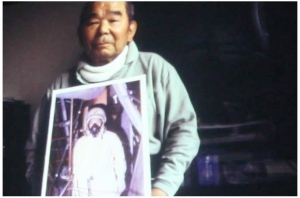
Nagao was a manager, and that was why he had this photo. An ordinary worker was not allowed to carry a camera. When I started my investigation, I asked the workers if it was possible for me to carry my camera into the plant because I was planning to be employed as a worker in order to shoot it. They answered that they were not allowed bring even a pencil in. There was a check point and they were thoroughly inspected. A manager however, was obliged to take photos when each of jobs had been done. So Nagao, from Osaka, could let his assistant take this great photo of himself. He wears the full-face mask. He was exposed to 70 millisieverts — which was more than the limit of 50 millisieverts. he got workers’ compensation. His disease was multiple myeloma. He sued TEPCO, demanding that it recognized that his illness was caused by radiation. Though the workers’ compensation was paid to him, the judges bluntly rejected his appeal. Keep in mind that the Japanese judiciary has never helped those powerless people, but only followed the state policy. Both Nagao and Iwasa were rejected.
(Photo 17)
How do you think about this premature death? Nobuyuki Shimahashi was 29 when he died. He worked for a subcontractor of the Chubu Electric Power Company at the Hamaoka Nuclear Power Plant — the place likely to be near the epicenter of the predicted huge earthquake.
I asked how much he was paid for his job: 180,000 yen or so per month, less than 10,000 yen per day. The wage has been kept around 10’000 yen per day, and never been raised for 40 years. You know why there has not been a raise for this long: there have not been enough jobs. Still, it is kept minimized, and no raise is likely in the future. Shimahashi’s daily wage was actually 6’000 yen, unfair for his dangerous job. He died a miserable death, getting chronic myelogenous leukemia. It was too painful.
His father worked for the Japan Self Defense Forces and naturally trusted the state. He never had an idea that a workplace of a state-backed project could have been so harmful. His mother lamented that if she could have known that the workplace was contaminated, she never would have let him work there. She cried and cried.
His premature death may predict what will happen to many of those local young people. There are not jobs, so they have to seek out work at the nuclear power plants, especially at the Tsuruga facility. The tragedy never ends. I must say that Fukushima is just the beginning of another tragedy. Why do we prioritize energy and profit over lives? It is completely wrong to have electricity that requires exposing workers to radiation. That is why I have long shot those workers for 40 years.
(Photo 18)
Shimahashi’s radiation dose is recorded here. Each of the workers is supposed to carry this document with him or her. But in reality, the companies keep the documents at their offices. This is problematic. One day after Shimahashi’s death, his company rewrote over this because his dosage was obviously high. Can you guess who does such a thing? — Elites! I want to question our education: what do those A-class universities teach? They have long produced youths who only serve the state and corporations. I believe that education is largely accountable for the Japanese tragedy.
Luckily we now know what a terrible thing was done to Shimahashi’s radiation dose record because a lawyer shot this. Of course Shimahashi got workers’ compensation, though after his death.
(Photo 19)
This old man said to me that when working, every day he was dressed like an alien from another planet. He said that he could not stand the protective gear and alarm meter because it was too hot and noisy. Then he took the mask off, and smashed the alarm meter while working. But, it cost him his life: he first got jaundice, and then his bones got cancer –he died. Observing all this, I could not help but investigate the nuclear power plants.
(Photo 20)
A builder specializing in working at high places, known as tobi, left these young children. Yoshizo Namatame worked in the Fukushima Daiichi Nuclear Power Plant. His story was also too painful. When I visited his family after his death, his mother welcomed me and took me to the cemetery to tell her dead son that someone from Tokyo finally came over to investigate why he died. I shot her praying in front of his grave. It was too painful.
(Photo 21)
This is the corpse of a Taiwanese nuclear plant worker. As long as nuclear power plants exist, miseries are found everywhere in the world. Few journalists specialize in nuclear power plants.
By the way, I was humbled and also happy when I won the 2001 Nuclear-Free Future Award in Education. The anti-nuke NGO World Uranium Hearing based in Munich gave me this prize, examining my works for six months
[10]. I was happy. I dare say I was saved by this award, having long been ostracized by Japanese.
This Taiwanese worker died at 34. He fell down during a regular check-up. He suffered for a week and then died. Taiwanese people traditionally put the body into a coffin and let it rest under a grave for seven years, and then they collect the bones — leaving the body for 6 or 7 years is long enough for the body to be reduced to the bones. but when his family members recovered his coffin, his muscles were not decomposed at all. So they collected the muscles for the National Taiwan University College of Medicine. I took this picture after the muscles were collected, yet some were still on the bones. The university found that the body was contaminated with radiation 1,000 times higher than the normal body.
The news was so provocative and got huge media attention — not only the Taiwanese TVs and newspapers, but also the American media (I do not know if it was CNN or ABC or CBS) covered this. But none of the Japanese media did.
Japanese TV is too busy broadcasting those stupid foodie shows. Where have those serious, good old TV journalists gone? We must examine the Japanese mass media, as well as Japanese journalism.
(Photo 22)
This was shot in Taiwan. Taiwan is in trouble: it is as small as Kyushu Island or Shikoku Island, but it has six reactors. Its nuclear waste is rapidly increasing. It has no room for the waste. How do the Taiwanese authorities deal with it? There is a small island called Orchid Island in the Pacific Ocean, 70 kilometers away from the main island. 2,800 indigenous people called Miyabi live there. Taiwanese authorities duped those people in order to collect the waste there. Guess what? They told the people to offer their land for building a canned products factory, so that the people would benefit from it. Surely, the waste is canned. Taiwanese authorities are swindlers. I believe that they leaned a lot from Japanese. This is a photo of the canned waste. They do horrible things indeed.
(Photo 23)
This is a nuclear power plant in northern Taiwan. It discharges hot water 80 tons per second into the sea. This beach is called Crystal Beach. The beach near the Mihama Nuclear Power Plant appearing in the first photo is also called Crystal Beach. Crystal may mean transparent, clean, and beautiful. There coral reefs have completely disappeared since this plant became operational. This is nothing but an environmental destruction. This is more serious than CO2. That is why I always criticize Naoto Kan. He does not understand this. A university student who learns only what he or she is told to learn, but never studies our actual society, will become a corrupt politician like him. This is a big problem. That is it. Thank you.
[5]Now Westinghouse is owned by Toshiba, and Mitsubishi is collaborating with AREVA.
[6]TEPCO also owns the Higashidori plant in Aomori Prefecture.
Shared from: https://east306.wordpress.com/2011/06/16/the-truth-of-the-fukushima-50-by-kenji-higuchi
SALE: "Nuclear Road Trip - Onward to Destruction" $1.99 through Feb. 10, 2015
This is a fictional tale that has not yet been told - ISIS plans to far surpass the 9/11 Twin Towers destruction.
Available as THE DISQUIET SURVIVORS of The Nuclear Catastrophe in Paperback





